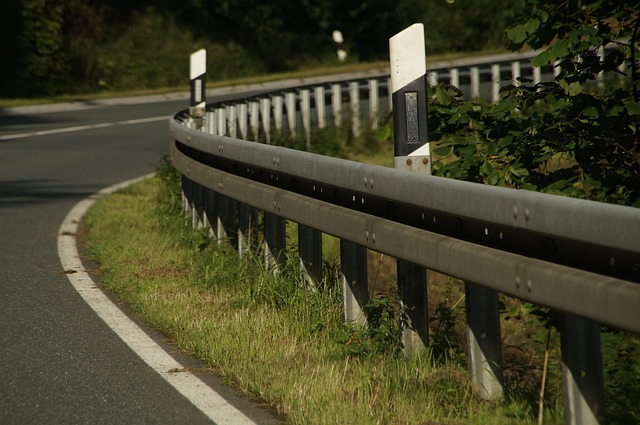Calculating Damages in Pedestrian Wrongful Death Cases

Pedestrian wrongful death cases require expert legal guidance due to their complexity, focusing on s…….
Pedestrian wrongful death, a tragic yet critical aspect of urban mobility, refers to the untimely and unjust loss of life for pedestrians involved in accidents on public roads or pathways. This phenomenon has garnered significant attention due to its profound impact on communities worldwide. The primary goal of this article is to provide an in-depth exploration of pedestrian wrongful death, its causes, implications, and potential solutions. Readers will gain valuable insights into the multifaceted nature of this issue and its role in shaping urban environments.
Pedestrian wrongful death, as the term suggests, encompasses incidents where a pedestrian loses their life due to negligence or misconduct related to road usage. It involves a range of scenarios, including motor vehicle accidents, collisions with fixed objects, and even intentional harm. The key components include:
The issue of pedestrian safety has been a concern for centuries, with early urban planners striving to create public spaces accessible on foot. However, the rise of motor vehicles in the late 19th century led to a dramatic shift. Cities evolved to accommodate cars, often at the expense of pedestrian-friendly infrastructure. This historical context highlights the ongoing battle between efficient transportation and safeguarding vulnerable road users.
Pedestrian wrongful death is not merely a legal or moral issue; it reflects the broader challenges of urban planning, mobility solutions, and public safety. As cities continue to grow and traffic congestion increases, ensuring pedestrian safety becomes more critical. This article aims to delve into the causes, consequences, and potential remedies, contributing to a safer and more inclusive urban environment.
Pedestrian wrongful death is a global concern, with every region facing unique challenges. According to the World Health Organization (WHO), road traffic injuries, including pedestrian fatalities, are a leading cause of death among young people aged 15-29 worldwide. This statistic underscores the need for a comprehensive understanding and tailored solutions.
The economic implications of pedestrian wrongful death are far-reaching. When a pedestrian loses their life, the financial burden can be substantial, including medical expenses, legal fees, and loss of potential income. Insurance claims, personal injury settlements, and workers’ compensation payments significantly impact the economy. According to a study by the International Transport Forum (ITF), traffic fatalities, including pedestrians, result in significant economic losses globally, estimated at $1.4 trillion annually.
Investor interest in pedestrian safety initiatives can influence urban development and infrastructure projects. Cities that prioritize pedestrian-friendly infrastructure attract investments in real estate, tourism, and retail, fostering economic growth. Conversely, areas with poor pedestrian safety may face challenges in attracting businesses and residents.
The advent of smart city technologies offers promising avenues for enhancing pedestrian safety. These innovations include:
Technological advancements have already shown positive results in pilot projects worldwide. For instance, smart signal timings based on pedestrian detection have improved crossing times and reduced waiting periods. The future potential includes fully autonomous vehicles, advanced crash avoidance systems, and integrated transportation networks that prioritize pedestrian mobility. However, ensuring the equitable access to these technologies across diverse urban landscapes remains a challenge.
The United Nations (UN) plays a pivotal role in setting global standards for road safety, including pedestrian protection. The UN’s Global Road Safety Challenge aims to halve traffic fatalities by 2030, emphasizing the importance of pedestrian safety measures. Various regional organizations, such as the European Union (EU), Asian Development Bank (ADB), and World Health Organization (WHO), have also developed guidelines and policies to address pedestrian wrongful death.
Local governments implement specific regulations tailored to their needs:
Despite the efforts of policymakers and urban planners, several challenges persist:
Addressing these challenges requires a multi-faceted approach:
Amsterdam’s comprehensive approach to urban mobility has been widely acclaimed for its success in reducing traffic fatalities. The city prioritizes non-motorized transportation with an extensive network of bike lanes and pedestrian paths. Dedicated traffic signals and well-designed intersections minimize conflicts between different road users. Amsterdam’s focus on ‘shared space’ principles, where vehicles and pedestrians coexist without physical barriers, has led to a significant reduction in pedestrian wrongful deaths.
Stockholm’s vision for a “Vision Zero” approach to road safety has resulted in remarkable achievements. The city has implemented various measures, including lowering speed limits, adding pedestrian-activated signals, and installing rumble strips on roads. These initiatives have led to a dramatic decline in traffic fatalities, with a particular focus on protecting vulnerable road users like pedestrians.
New York City’s comprehensive safety programs, such as “Vision Zero,” have aimed to eliminate all traffic-related deaths. The city has invested in data-driven analysis to identify high-risk areas and implement targeted interventions. These include improved road design, enhanced enforcement, and public education campaigns. As a result, New York City has seen a significant reduction in pedestrian fatalities while increasing overall traffic volume.
The future of pedestrian wrongful death prevention looks promising, with several emerging trends:
Pedestrian wrongful death is a complex global issue that demands multifaceted solutions. By understanding its historical context, economic implications, technological advancements, and policy frameworks, we can develop more effective strategies to prevent these tragic losses. The case studies presented demonstrate the potential for significant progress through integrated approaches and community involvement. As cities continue to evolve, prioritizing pedestrian safety will be crucial in creating sustainable, inclusive, and resilient urban environments.
Q: How does pedestrian wrongful death impact communities?
A: Pedestrian wrongful death has far-reaching consequences, affecting not only the immediate victims but also their families, friends, and communities at large. It can disrupt social fabric, create economic burdens, and influence urban planning decisions to enhance safety measures.
Q: What role do smart city technologies play in preventing pedestrian accidents?
A: Smart city technologies offer advanced solutions like connected vehicles, pedestrian detection systems, and intelligent traffic management systems, all of which contribute to safer road environments for pedestrians.
Q: Can enforcement alone prevent pedestrian wrongful death?
A: While enforcement is crucial, it should be accompanied by comprehensive strategies that include education, infrastructure improvements, and community engagement. A multi-faceted approach is essential for long-term success.
Q: How can cities ensure equitable access to safe pedestrian infrastructure?
A: Cities can prioritize low-income areas and underserved communities in their urban planning efforts, ensuring that investments in safer roads and pathways are inclusive and benefit all residents equally.
Q: What is the global initiative aimed at reducing traffic fatalities by 2030?
A: The UN’s Global Road Safety Challenge aims to halve traffic fatalities worldwide by 2030, emphasizing the importance of pedestrian safety as a critical component of global road safety efforts.

Pedestrian wrongful death cases require expert legal guidance due to their complexity, focusing on s…….

Pedestrian wrongful death cases involve complex legal matters stemming from negligent or intentional…….

Pedestrian wrongful death cases arise from negligence or intentional acts, significantly affecting f…….

Pedestrian wrongful death cases arise from negligent or intentional actions causing a pedestrian…….

Pedestrian wrongful death claims arise from negligence or intentional actions causing a pedestrian&#…….

A pedestrian wrongful death lawsuit can be filed by affected family members if a loved one is killed…….

Police reports are indispensable tools for legal teams in pedestrian wrongful death cases, providing…….

Pedestrian wrongful death cases require a comprehensive understanding of civil and criminal law, foc…….